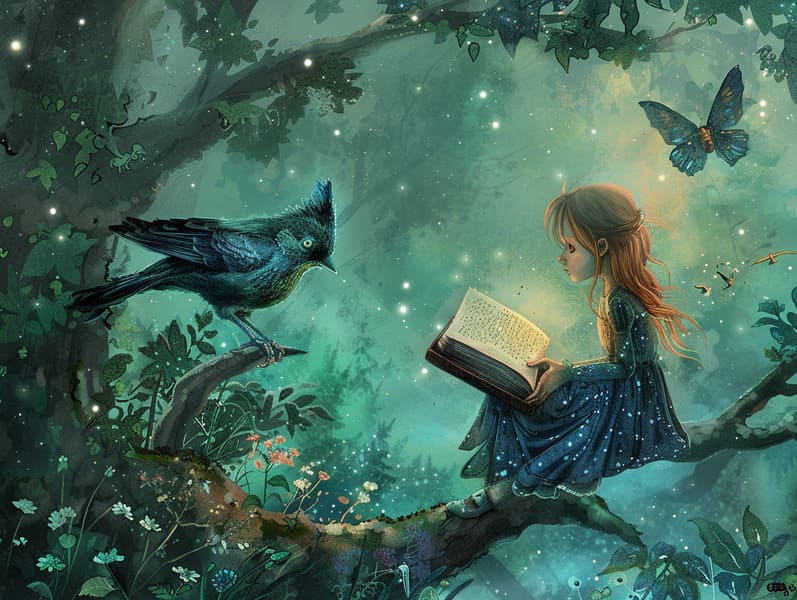
Vintage fairy tales have legendary status. These narratives have been shared from one generation to the next well before they were ever transcribed. They were born from a variety of backgrounds, including Middle Eastern traditions. They were initially conveyed among elders, often carrying themes and messages related to the societal norms and beliefs of the time.
The renowned Brothers Grimm, Jacob and Wilhelm, were among the first to collect many of these beloved narratives. Their collection, "Grimm's Fairy Stories," included tales like "Cinderella," "The Bread Crumb Trail," and "Little Snow White," which have since become pillars in the world of classic fairy tales. Similarly, Andersen's delightful tales, such as "The Story of the Little Mermaid," and "The Duckling that Could," have gained the love worldwide, cementing their place in the pantheon of iconic fairy tales.
Despite their age, classic fairy tales remain as relevant as ever, especially as children's bedtime stories. These magical stories are now available in diverse formats, including gorgeously illustrated books, charming animations, and web-based fairy tales.
Their lasting appeal can be ascribed to several whimsical characteristics:
Crucial Morals: Ancient fairy tales often offer important moral lessons. Fairy tales like "The Shepherd Boy and the Wolf" teach the merit of sincerity, while "The Hare and the Tortoise" underline the merits of determination and unpretentiousness. These stories offer children clear distinctions between correct and incorrect, molding their moral compass in a soft yet impactful way.
Empathy and Awareness: Traditional fairy tales frequently portray beings facing trials and tribulations, inspiring audiences to relate with their struggles and boost their triumphs. For instance, "Beauty and the Beast" teaches us the merit of seeing beyond the surface to recognize the real person of a being, developing awareness and awareness.
Cultural Understanding: Many old fairy tales are infused with the cultural contexts from which they bloomed. Reading these narratives can provide enlightening views into different backgrounds, advancing a sense of world appreciation and perception.
Fantasy and Innovation: The fantastical elements in traditional fairy tales—magical beings—spark children’s visions. These tales lead readers to fantasy realms, boosting inventive thinking and a sense of wonder that stays a lifetime.
Classic fairy tales are not only fantastical but also illuminating. They serve as entrancing tools in strengthening various mind and heart abilities in children. When old fairy tales are read aloud, they cultivate language skills by teaching new words and elaborate sentence structures. This practice also improves hearing abilities and mental focus, as little ones focus on every detail, looking forward to see what happens next.
Furthermore, analyzing the themes and characters of classic fairy tales can foster logical thinking and analytical skills. Kids are instructed to see patterns, predict happenings, and make sense of cause and effect. These debates also facilitate children say their thoughts and feelings, fostering their emotional intelligence.
In today’s modern era, the presence of digital storybooks has made these tales more obtainable than ever. Web-based platforms and programs give wide arrays of popular fairy tales that can be looked at or listened through anytime, anywhere. Fairy tales recited are particularly well-received, providing an interactive method for young ones to immerse in these mesmerizing stories. Sound books and spoken videos guide characters and settings to life, often augmented by bewitching music and soundtracks that enrich the tale experience.
The enduring charm of ancient fairy tales lies in their ability to modify to contemporary times while keeping hold of their basic principles. Contemporary revisions of these tales often show more diverse protagonists and modern settings, making them meaningful to today’s audience. However, the fundamental themes of guts, kindness, and honesty remain unchanged, continuing to affect audiences of all ages.
Old fairy tales also these guys offer a sense of peace and homeliness. They allow a neat narrative with a obvious beginning, middle, and end, often ending with the settlement of conflicts and the triumph of morality over immorality. This uniformity can be consoling for little ones, yielding a sense of sturdiness in an fluid world.
Old fairy tales continue to allure and guide new generations, maintaining their radiance and meaningfulness in modern society. As kids' bedtime tales, they impart a perfect blend of enchantment and education, enhancing moral values, empathy, and creativity. The existence of online fairy tales and the popularity of fairy tales told out loud warrant that these ancient stories remain within reach to new generations.
By sustaining and disseminating these narratives, we continue to recognize the rich tapestry of storytelling and cultural heritage. Whether you are exploring a gorgeously illustrated book, experiencing a web-based library, or listening to an audio story, the radiance of ancient fairy tales is always within reach. These tales teach us of the steadfast presence of fairy tales and its ability to tie us across time and space.
Even if you are viewing a vividly illustrated book, accessing a web-based library, or listening on an read-aloud book, the wonder of ancient fairy tales is always within reach.
These tales convey of the perpetual impact of storytelling and its ability to connect us across time and space, forging a link that delights and instructs alike.